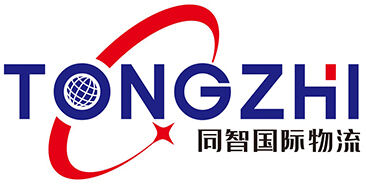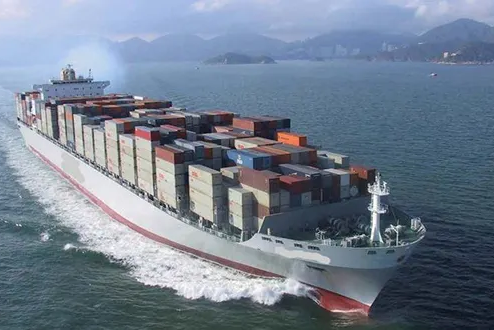Vận chuyển container là xương sống của thương mại toàn cầu, cho phép di chuyển hàng hóa một cách hiệu quả và an toàn trên khắp thế giới. Với nhu cầu ngày càng tăng đối với thương mại quốc tế, các doanh nghiệp phải hiểu rõ những khía cạnh tinh tế của vận chuyển container để tối ưu hóa hoạt động logistics của họ. Bài viết này khám phá các thực hành tốt nhất và những yếu tố cần cân nhắc để tối đa hóa hiệu quả trong vận chuyển container.
Hiểu về Vận chuyển Container
Vận chuyển container liên quan đến việc vận chuyển hàng hóa trong các container lớn, được chuẩn hóa. Các container này có nhiều kích thước khác nhau, phổ biến nhất là container 20 feet và 40 feet. Sự chuẩn hóa cho phép chuyển đổi liền mạch giữa tàu biển, xe tải và tàu hỏa, làm cho đây trở thành một phương thức vận chuyển linh hoạt và hiệu quả.
Những Lợi Ích Chính Của Vận Chuyển Container
Hiệu quả: Container được thiết kế để dễ dàng xử lý và xếp chồng, điều này làm tăng tốc độ quá trình xếp dỡ tại cảng. Hiệu quả này dẫn đến thời gian vận chuyển nhanh hơn và chi phí giảm xuống.
An ninh: Hàng hóa được vận chuyển trong container ít bị hư hại và trộm cắp hơn. Cấu trúc vững chắc của container cung cấp sự bảo vệ tuyệt vời chống lại thời tiết và khả năng mất cắp.
Tiết kiệm chi phí: Vận chuyển container thường tiết kiệm chi phí hơn so với các phương thức vận chuyển khác, đặc biệt là đối với các lô hàng quốc tế đường dài. Khả năng hợp nhất nhiều lô hàng vào một container giúp giảm thêm chi phí.
Tính đa dụng: Các container có thể chở nhiều loại hàng hóa khác nhau, từ nguyên liệu thô và máy móc đến hàng hóa dễ hư hỏng và sản phẩm đã hoàn thiện. Các container chuyên dụng, như container lạnh (reefers), đáp ứng các nhu cầu cụ thể như kiểm soát nhiệt độ.
Các ThựcRACTICE Tốt Nhất Cho Việc Vận Chuyển Container
Chọn Loại Container Phù Hợp
Việc chọn loại container phù hợp là rất quan trọng để đảm bảo vận chuyển hàng hóa an toàn và hiệu quả. Container khô tiêu chuẩn thích hợp cho hầu hết các loại hàng hóa, nhưng các doanh nghiệp nên xem xét sử dụng container chuyên dụng cho các nhu cầu cụ thể:
Container Lạnh (Reefers): Dùng cho hàng hóa dễ hư hỏng cần kiểm soát nhiệt độ.
Container Mở Đầu: Dùng cho hàng hóa cồng kềnh không thể vừa vào container tiêu chuẩn.
Container Kệ Bằng: Dùng cho hàng hóa nặng và cồng kềnh như máy móc và phương tiện.
Tối Ưu Hóa Việc Sử Dụng Container
Tối đa hóa việc sử dụng không gian trong container có thể làm giảm đáng kể chi phí vận chuyển. Các doanh nghiệp nên:
Đóng gói và xếp chồng hàng hóa đúng cách: Đảm bảo hàng hóa được đóng gói chặt chẽ và an toàn để tránh dịch chuyển trong quá trình vận chuyển.
Sử dụng pallet và đế trượt: Giúp xử lý dễ dàng và sử dụng không gian hiệu quả.
Cân bằng phân phối trọng lượng: Phân bổ trọng lượng đều để duy trì sự ổn định và tránh hư hỏng.
Triển khai hệ thống theo dõi tiên tiến
Việc theo dõi và giám sát thời gian thực cung cấp những thông tin quý giá và tăng cường khả năng nhìn thấy trong suốt quá trình vận chuyển. Hệ thống theo dõi tiên tiến cung cấp:
Cập nhật vị trí thời gian thực: Giữ cho doanh nghiệp được cập nhật về vị trí và tình trạng của lô hàng của họ.
Giám sát điều kiện: Đảm bảo rằng hàng hóa nhạy cảm với nhiệt độ luôn ở trong phạm vi yêu cầu.
Phân tích dự đoán: Dự đoán các sự chậm trễ tiềm năng và tối ưu hóa tuyến đường để giao hàng nhanh hơn.
Đảm bảo tuân thủ quy định
Tuân thủ các quy định vận chuyển quốc tế là điều cần thiết để tránh sự chậm trễ và phạt. Các doanh nghiệp nên:
Giữ liên lạc về các quy định thương mại: Cập nhật thường xuyên các luật lệ nhập khẩu/xuất khẩu và yêu cầu hải quan cho mỗi điểm đến.
Chuẩn bị tài liệu chính xác: Đảm bảo tất cả các tài liệu cần thiết, chẳng hạn như vận đơn hàng hóa, chứng thư gốc, và khai báo hải quan, được điền đầy đủ và nộp đúng hạn.
Làm việc với các đại lý hải quan có kinh nghiệm: Thúc đẩy quá trình thông quan hải quan suôn sẻ và giảm thiểu rủi ro vi phạm quy định.
Sử dụng công nghệ để tăng hiệu quả
Công nghệ đóng vai trò then chốt trong việc tối ưu hóa hoạt động vận chuyển container. Các doanh nghiệp nên áp dụng:
Phần mềm quản lý vận chuyển: Tự động hóa quy trình đặt chỗ, tài liệu và theo dõi.
Hệ thống xử lý hàng hóa tự động: Gia tốc quá trình xếp dỡ tại cảng.
Công nghệ Blockchain: Tăng cường minh bạch và an ninh trong chuỗi cung ứng bằng cách cung cấp hồ sơ giao dịch và di chuyển không thể thay đổi.
Những yếu tố cần lưu ý khi vận chuyển container
Quản lý chi phí
Chi phí vận chuyển có thể ảnh hưởng đáng kể đến lợi nhuận của doanh nghiệp. Các chiến lược chính để quản lý chi phí bao gồm:
Gộp Hàng Vận Chuyển: Kết hợp nhiều lô hàng thành một container để tận dụng quy mô kinh tế.
Thương Lượng Hợp Đồng: Đảm bảo mức giá và điều khoản ưu đãi với các công ty vận tải biển và đại lý vận chuyển.
Tối Ưu Hóa Đường Đi: Chọn những tuyến đường hiệu quả và tiết kiệm chi phí nhất để giảm thiểu thời gian transit và tiêu thụ nhiên liệu.
Quản lý rủi ro
Quản lý rủi ro liên quan đến vận chuyển container là điều cần thiết để đảm bảo việc giao hàng an toàn và đúng hạn. Hãy xem xét những điểm sau đây:
Bảo Hiểm: Bảo vệ khỏi các rủi ro tiềm tàng
do hư hại, trộm cắp hoặc chậm trễ.
Kế Hoạch Dự Phòng: Phát triển kế hoạch để xử lý các gián đoạn không mong muốn, chẳng hạn như đình công tại cảng hoặc thiên tai.
Kiểm Toán Định Kỳ: Thực hiện kiểm toán các quy trình vận chuyển và đối tác để xác định và giảm thiểu rủi ro.
Thực hành bền vững
Bền vững đang trở nên ngày càng quan trọng trong logistics toàn cầu. Doanh nghiệp có thể áp dụng các thực hành thân thiện với môi trường như:
Sử dụng Tàu Thuyền Tiết Kiệm Nhiên Liệu: Lựa chọn các tuyến vận chuyển sử dụng tàu thuyền hiện đại, tiết kiệm nhiên liệu để giảm thiểu khí thải carbon.
Thực Hiện Giải Pháp Bao Bì Xanh: Sử dụng vật liệu bao bì có thể tái chế và phân hủy sinh học để giảm tác động đến môi trường.
Bù Đắp Khí Thải Carbon: Tham gia vào các chương trình bù đắp carbon để trung hòa dấu chân môi trường của hoạt động vận chuyển.
Phần kết luận
Vận chuyển container là một phần quan trọng của thương mại quốc tế, cung cấp hiệu quả, an ninh và tính kinh tế. Bằng cách áp dụng các thực hành tốt nhất như lựa chọn loại container phù hợp, tối ưu hóa việc sử dụng container, tận dụng hệ thống theo dõi tiên tiến, đảm bảo tuân thủ quy định và chấp nhận công nghệ, doanh nghiệp có thể tối đa hóa lợi ích của việc vận chuyển container. Ngoài ra, quản lý chi phí, giảm thiểu rủi ro và áp dụng các thực hành bền vững là điều cần thiết để duy trì lợi thế cạnh tranh trên thị trường toàn cầu.







































